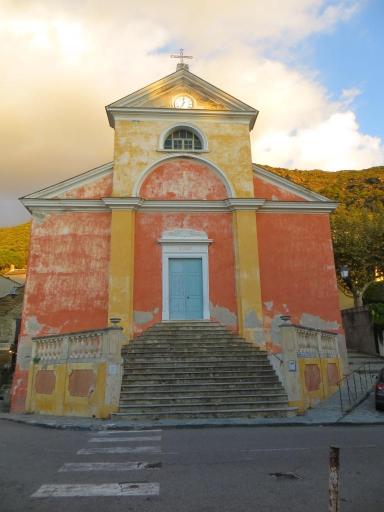
I live in southwest France but I’m very attached to the island of Corsica and fascinated by its culture and customs.
My historical novel The House at Zaronza takes place mostly on Corsica during the early 20th century. The main character, Maria, goes to Midnight Mass on Christmas Eve with her parents. How did Corsicans celebrate Christmas in the past?
One thing is certain: there was little ostentatious Christmas adornment or commercialism. Corsicans have always reserved their colourful religious processions for Easter. Christmas was a time for quiet observance. Aspects of it had a distinct pagan tang.
Christmas customs
People didn’t decorate their houses, except perhaps with a holly bough or a few green branches. Few churches had a crèche, although some had a model of the infant Jesus, which was presented to each member of the congregation at Midnight Mass.
Dorothy Carrington travelled around the island in the late 1940s at the end of an epoch. The lifestyle of Corsicans in the country areas had barely changed in a thousand years. She describes in Granite Island how she was invited to spend Christmas in a small, poor village in the south of the island.
The women walked to Midnight Mass in a neighbouring village, while the men stayed at home to mind the children and cook. Dorothy Carrington was told that this was the custom on that one night of the year.
When they got home, her friend’s uncle had made a huge fire in the grate and stewed a goat. He then regaled them with a ballad about a celebrated bandit. That was the extent of the Christmas festivities.
In other places the meal was more frugal: a soup made of chestnuts or chick peas and some grilled chestnuts.
Today, goat is still on the Christmas menu. But it’s accompanied by more luxurious fare, such as oysters, scrambled eggs with sea urchin and the Corsican version of the French bûche de Noël (Yule Log) with chocolate and chestnuts.
Pagan traditions
When Dorothy Carrington visited, the Corsicans were still very attached to their ancient customs.
She believed that Christian practices often simply overlaid pagan rites and traditions rooted deep in antiquity. For instance, she describes the signadori, who were soothsayers, healers and exorcisers of the Evil Eye. They could only transmit their secret knowledge and formulas orally to an “apprentice” on Christmas Eve as the church bell rang.
Another tradition with probable pagan origins was that of lighting a huge bonfire in the village square, where the church was usually located. This tradition, mostly observed in the north of the island, is maintained in places today.
The fire burned from Christmas Eve until the New Year and the villagers contributed firewood to keep it going. Neglecting to do so could result in a death in the family the following year.
I’d love to visit Corsica at Christmas. The tourists have gone, or don’t venture beyond the main towns, and the mountainous countryside and the hilltop villages must be dusted with snow. Then, perhaps, the real Corsica emerges from its sleep.
Copyright © Vanessa Couchman 2014. All rights reserved.
Reblogged this on The Knitted Curiosity Cabinet and commented:
Here’s today’s offering from Christmas with the Crooked Cats. Ever wondered what Christmas is like in Corsica? Wonder no more. Join us, and catch up on the stories and articles that have already been posted. Part one of my story, “Making the Best of Things, or, Five Stay Home for Christmas” will be posted on 16th December. Come and join the fun. https://www.facebook.com/groups/737252102990447/?fref=ts
LikeLike
Thanks for reblogging, Yvonne. Really looking forward to your story.
LikeLiked by 1 person
Fascinating and yes, the bonfire would have been a hangover from the Fire festival at Solstice which fall just before Christmas – so many of the pagan traditions have been assimilated into Catholic countries.
LikeLike
Thanks for that explanation, Ailsa. I thought it was probably to do with the Solstice but couldn’t find a definite link. However, it seems the most likely origin of the practice.
LikeLike